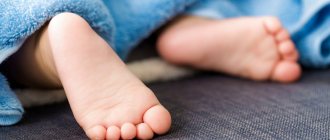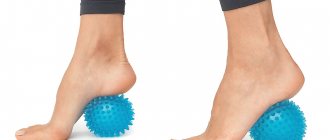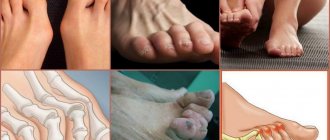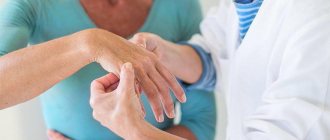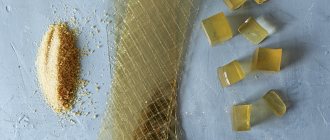Documentary base
Issues related to the military service of citizens of the Russian Federation are regulated by the “Regulations on military medical examination.” It contains a list of diseases taken into account when entering the armed forces. The document assigns a “suitability category” to various diseases. This letter indicator determines the degree to which the conscript’s health deviates from the norm.
There are 5 eligibility categories:
- A or B - the young man is recognized as fit for military service.
- B – limited fit for military service.
- G – temporarily unsuitable. The category is confirmed every six months/year.
- D – the young man is given a military ID for health reasons.
According to Article 68 of the documentation cited above, even minor impairments caused by flat feet serve as grounds for deferment or exemption from service. This does not apply to all degrees of the disease. They are described in the comments to Article 68.
Ergo backpack, scooter, balance bike, snowboard
– Ergo backpacks – what are they? To what extent can they be used?
– There is no medical data that would indicate the benefits or harm of slings. In utero, the child is in a monstrously crooked position; at the moment of birth, he straightens his arms, legs and back, nothing happens to him, despite months of being in a curled position. From the point of view of common sense, it seems to me quite difficult to spoil something for a child with a sling. In the same way, our smaller brothers sleep curled up, this does not damage their spine and legs. From a biological point of view, the embryo's position is quite physiological.
- What about swaddling?
– This is a different story, there is just a nuance here. Man, unlike our tailed, hairy ancestors, was rewarded by nature with upright walking. In humans, the position of the hip joint in a standing position and when walking differs significantly from the position in quadripedals, i.e. four-legged animals. A person has a predisposition to hip dysplasia, which occurs with a frequency of about one case per hundred, this is not so small. The position in which the legs are tightly closed is an unfavorable position, which, if there is a predisposition, can contribute to either improper development of the joints, or even, in the case of severe anatomical disorders, hip dislocation.
This is well known from the history of orthopedics, on a cultural-ethnic basis. In Armenia, it is traditional to tightly swaddle children's legs, especially girls. In Africa, it is customary to carry a child on the hip or on the stomach with legs apart. Orthopedists 100 years ago knew for sure that in Armenia there is a very high incidence of congenital hip dislocation, and in African tribes there is practically no congenital hip dislocation.
That is, it is absolutely certain that tight swaddling of the legs in a contracted state contributes, statistically, to an increase in the incidence of hip dysplasia and hip dislocation.
This does not mean that this will happen in a particular child, but if the child has a predisposition, then tight swaddling will contribute to the implementation of this predisposition.
– Won’t your crooked legs get better?
– Crooked legs will never be corrected by swaddling, absolutely. This is another story, it has nothing to do with swaddling, but this is a long story, it is not for this conversation, because it needs to be drawn.
– Scooter, balance bike – is there any benefit? Is a trampoline fun without harm?
– Regarding scooters and balance bikes: children do not have any medical prejudice towards these types of activities. The only criterion is common sense and safety in terms of injury. They are no more dangerous than other devices that children ride on. It must be remembered that the likelihood of injury, direct damage, is higher on scooters and balance bikes than if the child was just walking along the path. You need to be aware that the faster the child moves, the harder his nose will hit the ground when, sooner or later, he will fall anyway. It's simple physics. A child should have things in life that bring him joy, but in everything there should be common sense and adult control.
As for the trampoline, everything is much worse here, from a medical point of view. 10 years ago it was almost impossible to buy a personal trampoline. Now they have become cheaper, more accessible, any family can afford to buy a home or outdoor trampoline. This led to the coining of the term “trampoline fracture” in Western medical literature. These are fractures of long tubular bones, usually the tibia, with virtually no displacement due to compression of weak bone tissue. Jumping on a trampoline, especially long ones, is potentially dangerous.
– What about jumping walkers?
– Walkers and jumpers are more of a kind of entertainment for a child. From a developmental point of view, they do not bring anything to the child. Their importance or danger for crooked legs has been greatly exaggerated. This is entertainment for the child, an opportunity, several months before he begins to walk on his own, to move in space without distracting the attention and time of the parents, nothing more.
But there are nuances. Several years ago, the German Association of Pediatric Traumatologists recommended extreme restraint in the use of runners and walkers for the reason that children in walkers can move quite quickly. Studies have shown that quite often children drive into tables, bedside tables, and fall down stairs.
– Even now they like to put a special circle around the child’s neck in the bathroom, is that okay?
- Also common sense. If everything happens under the control of the parents and in front of the parents, then, in my opinion, there is no likelihood of a negative effect from this circle. This is an exclusively utilitarian thing for solving a specific problem.
– Snowboarding is probably the same thing, let’s not dwell on that.
– Snowboarding is a highly traumatic sport. Whether or not to put a child on snowboarding and skiing should be a conscious decision of the parents with full understanding that this is a sport with a high risk of injury, although, of course, it gives a lot of positive emotions. Michael Schumacher, having overturned his car so many times, ruined his life and career just on some unfortunate skiing.
How is flat feet determined?
The categories of suitability of a young man for service are established during an examination, which is carried out at the military registration and enlistment office. A conscript with flat feet takes with him documentation that confirms the presence of the disease. The diagnosis is made by a pediatrician or orthopedist. These doctors specialize in osteochondral changes.
The degree of the disease is determined using the following methods:
- Podometry. From the data obtained when measuring the foot, the coefficient is calculated.
- Plantography. The fastest method is for the conscript to stand on paper. A clear mark remains from a foot smeared with cream.
- Radiography. Allows you to accurately determine the degree of progression of the disease.
- CT scan. Identification of complications and changes in osteochondral structures.
The table below describes the characteristics of different degrees of the disease:
| Degree of flat feet | Characteristics | |||
| Thumb deflection, ° | Arch height, mm | Depression angle, ° | Angle between bones, ° | |
| 1 | 15-20 | 25-35 | 131-140 | 10-12 |
| 2 | 20-30 | 17-24 | 141-155 | 12-15 |
| 3 | 30-40 | until 17 | more than 155 | 15-20 |
| 4 | more than 40 | from 20 | ||
Taking these data into account, the doctor of the medical commission determines the degree of the disease.
Foot diagnostics
With the help of an X-ray examination, you can not only detect an injury or some kind of deviation, but also obtain detailed information about the structure of the foot, the condition of each bone and joint, as well as some features of the anatomy. Today, this is one of the few techniques that allows you to make an accurate diagnosis and select the optimal treatment methods.
Using an x-ray of the foot, performed with a load, the following disorders are diagnosed: - flat feet, osteophytes, hallux valgus; - arthrosis, arthritis, gout; — pathological changes in the bone and joint structures of the foot, congenital anomalies; - dislocations, fractures, cracks, injuries.
Flat feet 3rd and 4th degree
Regulation No. 123 on military medical examination identifies the degrees of flat feet that are grounds for exemption from service:
- disease of the 3rd or 4th degree of the transverse type;
- they are not accepted into the army with longitudinal flat feet of the 3rd degree, regardless of the presence of painful sensations;
- 3rd degree flatfoot, accompanied by 2nd stage deforming arthrosis.
If these diseases are indicated in the medical report, the young man is considered to be of limited fitness, which implies the issuance of a military ID. The citizen is enlisted in the reserve. The young man will have to serve only when martial law is declared.
Important! If a young person is diagnosed with “deforming arthrosis” of the joints of the foot, he does not fall under the exemption under Article 68. However, if there is a 3rd degree of flatfoot, category “B” is classified.
If a foot deformity is diagnosed in childhood, signs of pathology are recorded in the medical record. The documentation reflects the methods of treating the disease, their effectiveness and accompanying symptoms. These data make it possible to simplify the examination procedure at the military registration and enlistment office.
In order for a young man with 3rd degree flatfoot to be guaranteed a “B” fitness category, during various examinations it is important to indicate in the documents whether there was any pain. If they exist, the doctor must record the complaints in the outpatient record. This will make the likelihood of category “B” as high as possible. If a different category is determined, the decision of the draft commission can be appealed much easier.
“Insoles and shoes affect the shape of a child’s foot in the same way as a hat affects the shape of his head.”
– All parents of babies are tested by a difficult struggle between a hard back and a soft sole. Should shoes have a hard heel when a child learns to walk? Or are Western doctors right when they say that you need to walk barefoot?
– The human foot is designed for walking barefoot. Humanity has been wearing shoes in the current sense of the word for the last 500 years, probably, and in Russia it’s been like this for about 200 years. Until recently, all of Russia walked in bast shoes, they didn’t have any backs - neither high nor low - and people did not die out from flat feet .
The formation of the arch of the foot has nothing to do with shoes at all.
At the Galen Clinic we use ancient Greek statues as an example: the ancient Greeks did not have shoes! Look how beautifully formed their feet are! The arch of the foot is a genetically programmed element of its anatomy. Biologically, the foot is adapted only to walking barefoot
One of the great modern American podiatrists said: “Insoles and shoes affect the shape of a child’s foot just as a hat affects the shape of his head.” That is, no way! It is definitely impossible to change the shape of your feet for the better with shoes!
Where did this high back story come from? There was an empirical postulate that if you set a certain pattern for the growth of the foot in the form of a high heel or arch support, then the foot will develop along this pattern, but this has not been confirmed by any research.
To roughly imagine the analogy, we can recall the story of mustard plasters and jars. If 30 years ago a child started coughing, a pediatrician would come to him and prescribe him mustard plasters or cups, or both. If now a pediatrician comes to your coughing child and prescribes mustard plasters or cupping, then next time you will call another pediatrician.
You don’t wonder why mustard plasters or cans disappeared. But they disappeared because their effectiveness has not been confirmed by anything, and 30 years ago this effectiveness was not discussed at all; it was a priori believed that mustard plasters and cups would be useful for a coughing child. Medicine is changing, it is changing based, first of all, on the principle of evidence.
If you look at your palm, you will see that there is a notch on your palmar surface, the so-called “arch of the hand.” Have you ever worn gloves with high, hard cuffs? No? How did your hand form if you never wore hand supports? Where did you get this dimple on your hand? You are evolutionarily programmed to have it. The size of this notch is different for everyone. I have it a little more, you have it a little less.
Little of! As a rule, if we put a hard glove on a hand (as my colleague cites in the article), we will significantly worsen the function of the hand, for example, in a hard glove you will not be able to draw or sculpt.
It's highly likely that I have a slightly larger arch than you. It is possible that you have a tendency to flatten the arch of your feet, do you personally?
- Maybe. And children have it.
– Children have a slightly different story. When children are born, they have two fat bodies: one on the cheek to facilitate sucking, the so-called “Bishat fat pad”, the other is the fat pad on the foot, this is a built-in arch support that gradually dissolves. If you look at a newborn baby's foot, it is slightly arched and springy. And this “built-in arch support” is not needed to form the arch of the foot, the arch of the foot is formed according to other laws, it is needed to soften the load. If this lump experiences excessive pressure, it may dissolve faster.
But there is a nuance regarding arch support in shoes. Can you imagine a car steering wheel? When you take the steering wheel, it is more comfortable for you when it is not smooth, but has a texture on it. It follows the shape of your brush. It’s a similar story with shoes – the most comfortable shoes are those that, to one degree or another, follow the topography of your foot, so good, comfortable, convenient shoes always have a plantar surface lining. There, as a rule, there are instep supports. The same applies to sports shoes, on which the result of competitions largely depends - they always have an instep support. But not so that the athlete’s arch is formed, but so that the foot feels as comfortable and stable as possible.
There is one more nuance. In children under three years of age, foot propulsion is not sufficiently developed. Children under three years old walk as if waddling. There is an English word that is typical for children from one to two - two and a half years old, this word toddler, roughly translated as “stomper,” that is, a child who does not yet walk confidently. There is no single word in the Russian language that would describe such a gait. In these children, indeed, due to their age, the function of the ankle joint is not yet sufficiently formed.
I call this gait “bear-toed.” Slightly waddle, swaying from side to side
So these kids, at least in theory, have some justification for wearing taller shoes to improve stability. If a child walks unsteadily barefoot or in low-backed shoes, and you put high-backed shoes on him, and he walks more steadily in them and falls less, then for this situation there is at least some biological basis for high-backed shoes - for situational improvement of resilience. The maximum when this is biologically necessary is up to three years.
Unfair marketing tactics
– So, it’s all the same as with cans and mustard plasters? But orthopedic shoes are expensive!
– I wouldn’t like to suspect someone of using some dishonest marketing tactics, but when I come to the store to buy shampoo for myself, and there are two shampoos next to me – one regular, inexpensive, and the other for preventing hair loss – and I have small problems – my hand will reach out to the one for improvement, this is psychology. Although, as a doctor, I understand that it does not improve anything, because if it were so, then the balding male half of humanity would not suffer from complexes.
I completely agree! Orthopedic shoes are needed for children with orthopedic pathology! Nobody prescribes glasses for prevention! Here is another article on our website https://www.galen.by/articles/46-pervaya-obuv-rebenka
So my mother comes to the store to buy shoes, and next to them there are two pairs - one pink, light, comfortable - ordinary, and next to them - shoes that are tall, heavy, scary and expensive, but it says on it that they are for the prevention of flat feet.
Most likely, the hand of a modern Internet-addicted mother will reach for those shoes on which it is written that they are preventative. Consciousness works like this: I want to do everything for my child before it’s too late. This hypothetical “before it’s too late” concept works very well. This is a large marketing niche where consciousness can be manipulated.
And in general it is a question of trust. If, relatively speaking, in Finland a doctor tells a patient that this and that needs to be done, then the patient does it. If in Russia a doctor says that something needs to be done, then 99% of patients, especially mothers, will go online and double-check his opinion. Is it true?
- Certainly!
– Your answer “of course” is very revealing. I'm not even talking about the degree of mutual distrust, this does not concern anyone personally, this concerns the atmosphere. The degree of mistrust in society is too great.
– By the way, now a lot of things are passed from child to child, this is in any country, including shoes. Is it normal to wear shoes after having another baby?
– Shoes are clothes for the feet and nothing more. When you buy panties, do you go to the doctor to consult? Sorry for the question. Probably not. And there are so many fancy things with shoes!
And everything is very simple, shoes are clothes for the feet. The criteria for choosing shoes for children are simple - comfort, lightness, beautiful appearance and true to size.
If you take shoes anywhere, even from a trash heap, and they meet these criteria, then do what you want with basic hygiene. In Russia, and not only in Russia, it is customary that from generation to generation the younger ones wear after the elders, including shoes. Therefore, there is no need to complicate simple things.
Flat feet 2nd degree
For 2021, the “Schedule of Diseases” states that young men with this degree of illness are fit for military service. In this case, some restrictions are established. A conscript cannot serve in selected branches of the military, such as the special forces of the GRU General Staff or the Airborne Forces. For other places the young man is suitable. Since there are more than 80% of them, a young man with second-degree flat feet is definitely called up.
The times when a conscript could not serve with 2nd degree flat feet in Russia are over. Lawmakers do not plan to change this provision in the near future.
Flat feet 1st degree
Since the first degree of the disease is easier than the second, young men with this diagnosis are also taken into the army. According to regulatory documentation, 1st degree flatfoot does not serve as a basis for releasing a young man from the army.
The list of illnesses was compiled in such a way that it included diagnoses that actually prevented service in the army. If the disease cannot become complicated and negatively affect the health of the conscript, he falls into the “fit” category.
Reviews
Dear readers, was this article helpful? What do you think about exemption from the army due to flat feet? Leave feedback in the comments! Your opinion is important to us!
Maksim
“The military registration and enlistment office does not make a diagnosis and has no right to change it. You need to worry about the correct verdict in advance. I had a situation where the angle of inclination was grade 3, but the doctor gave it grade 2. I was examined again in another hospital. According to the first diagnosis, they would have been sent to serve, but according to the second, they would have been given a release with a “B.”
Igor
“In all respects I was healthy, in good health. But the confirmed diagnosis of flat feet of the third degree was not accepted into the army.”
Treatment of flat feet in the army in 2021
Thanks to improvements in military uniforms, even young men with flat feet feel comfortable in various situations. Tarpaulin boots were replaced with ankle boots. To better combat the disease, orthopedic insoles are used. They support the foot well, relieving the load on the longitudinal and transverse arches.
Insoles are selected depending on body type. They are worn daily, even after the army, for prevention. It is recommended to keep the boots in good condition. The sole should not be worn down. Otherwise, the insoles will be useless and even harmful.
Another treatment method involves self-massage before bed. Blood circulation in the foot improves, which allows you to restore a normal level of functionality.
Exercises for the treatment of 1st degree flat feet:
- first pull your socks away from you, then pull them towards you;
- collect objects with your feet;
- rotate your feet;
- walk on heels and toes.
When grade 2 flatfoot progresses, the serviceman goes to the medical unit. As the pain increases, the young man is discharged from the army to be referred to an orthopedist. Sometimes surgery is necessary to eliminate the consequences of the disease.
“Is it possible to buy shoes to grow in size?”
– However, what exactly in shoes can cause harm?
– Shoes that are too big can cause harm, not globally, but situationally, for example, disrupting the rhythm of gait, or complicating a child’s life. Of course, you have to buy shoes for your child to grow into. This consideration is purely economic, because the child's foot is growing, and it is difficult to keep up with it. The question is often asked: “How long can you buy shoes to grow in size?” – there is no single answer to this question.
Just imagine that you buy shoes for a child a size larger, but children's sizes are slightly different and the proportions are different, and compared to an adult, this is more than a size larger. For example, you got beautiful shoes of size 38.5, and your size is 37. Most likely, you will not be very comfortable in them. Approximately in this paradigm we need to consider shoes for a child.
Very often you can see a picture on postcards and posters in which a little girl is standing in her mother’s shoes - her feet are pointed inward, her knees are bent - the child does this in order to compensate for the inconvenience of wearing large shoes. Or imagine the gait of a person walking on dry land wearing flippers. To control gait, it is necessary that the length of the shoe matches the length of the foot, not necessarily on the inside, but also on the outside. This very often applies to winter shoes. You probably know from your children that they don’t walk well in winter shoes, because they are big and heavy.
Shoes should not be heavy; high heels greatly increase the weight of the shoes. Shoes should not be too hard. How do people walk in ski boots? Not very confident. Imagine the feeling of a child walking in hard, high-backed boots. How much can you walk in ski boots?
- Hell!
“Little children live in approximately the same hell, for whom they put on tall, heavy shoes and a pair of socks.
conclusions
The question “are people with flat feet of 1st and 2nd degrees accepted into the army” can be answered positively. Such ailments are considered mild and serve only as a restriction on enlistment in elite troops. With flat feet of the 3rd and 4th degree, the young man receives a military ID for health reasons. When diagnosing a disease in adolescence, it is important to pay attention to pain syndrome. If there is one, it is recorded in the medical questionnaire. Special exercises and wearing orthopedic insoles help to avoid the development of pathology. As the disease progresses, the serviceman is sent for examination and treatment.


